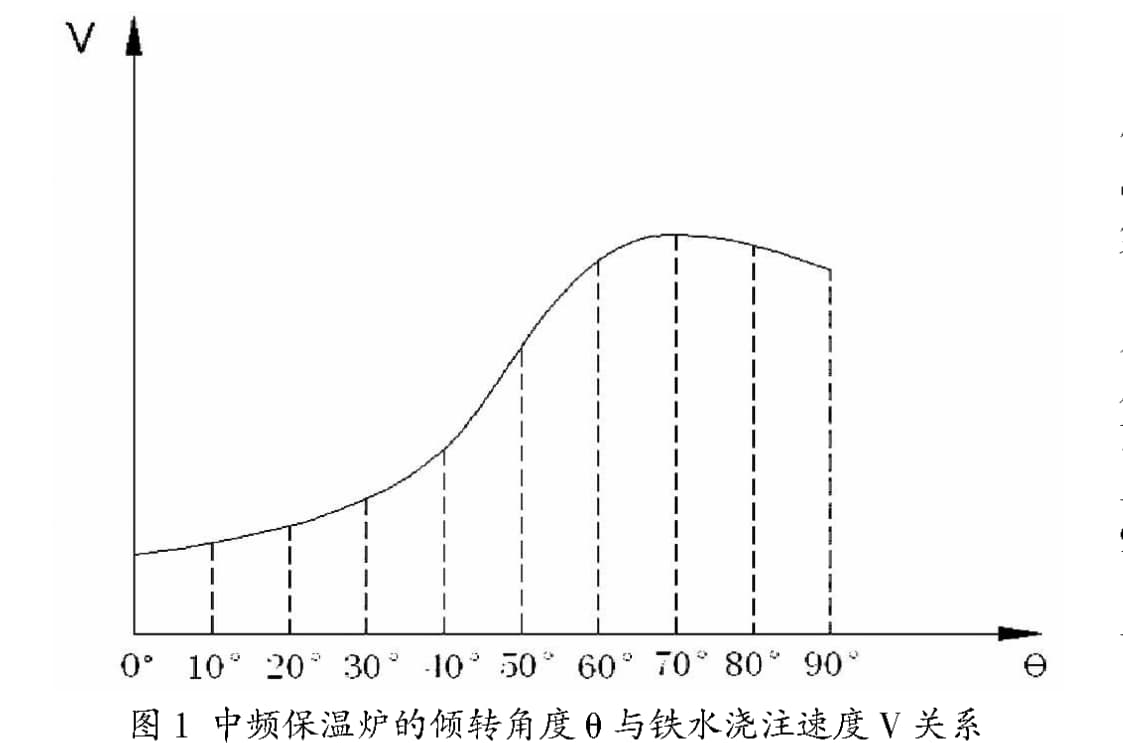Improvement and optimization of gating system for metal mold ball production line (2)
3.2 Plan improvement
New automatic gating system control method:
1) The intermediate frequency holding furnace is tilting to obtain the Tundish’s total weight, and the molten metal poured into the Tundish. The Tundish is connected between the mold for processing the casting molding on the automatic pouring production line and the gating system of the intermediate frequency holding furnace for temporary storage: a small capacity pouring ladle for storing the molten metal flowing out of the Intermediate Frequency Holding Furnace;
2) calculate and obtain the difference between the total weight and the Self Weight of the Tundish obtained by prior measurement
3) calculate the pouring speed of the molten metal;
4) Comparing the pouring speed with a predetermined first pouring speed of the molten metal;
(5) when the pouring speed is not equal to the first pouring speed, the tilting angle of the intermediate frequency holding furnace is adjusted until the pouring speed reaches the first pouring speed;
(6) to judge whether the pouring amount of the molten metal reaches a preset critical value of the pouring amount of the molten metal, which is less than the rated advance value of the pouring amount of the molten metal;
(7) when the molten metal pouring amount reaches the critical value of the molten metal pouring amount, the current pouring speed of the molten metal is compared with the preset second pouring speed of the molten metal
(8) when the pouring speed is not equal to the second pouring speed, the intermediate frequency holding furnace’s tilting angle is adjusted until the pouring speed reaches the second pouring speed. In the pouring process of the casting, the first pouring speed is first used for rapid pouring, and when the molten metal pouring amount reaches the critical value. Instead, the second pouring speed below the first pouring speed is used for slow pouring so that the molten metal pouring amount can be more accurately controlled when the molten metal pouring amount is about to reach the rated advance value, the phenomenon that the control process can not respond in time due to the pouring speed being too fast and the pouring amount of the molten metal exceeds the rated value ahead of time is avoided.
(9) To judge whether the difference reaches the pre-set rated advance value of the molten metal pouring amount, and when the difference reaches the pre-set rated advance value of the molten metal pouring amount, a control signal is generated, which is used to control the intermediate frequency holding furnace to stop further tilting.
The maximum range of inclination angle of medium frequency furnace is 0-90 ° , which is divided into nine equal groups, then the dip angles are in turn 0-10 ° , 10-20 ° , 20-30 ° , 30-4 ° , 40-50 ° , 50-60 ° , 60-70 ° , 70-80 ° and 80-90 ° , each set of tilt angle intervals corresponds to a different first pouring speed, a second pouring speed, a critical value of the molten metal pouring amount and a rated advance value of the molten metal pouring amount, which are predetermined, the specific weight of the above parameters can be determined according to the actual situation so as to avoid too fast pouring speed of the tundish under the premise of ensuring the casting production efficiency, as a result, the automatic pouring control method can not respond in time to the measurement of the difference and the control of the tilting angle of the intermediate frequency and the holding furnace, and the case of insufficient or overfull pouring of the casting can occur, thus ensuring the quality of the product. Because of this, we calculate and modify the velocity of Molten Iron pouring out of medium frequency holding furnace at different angles. As shown in figure 1.


